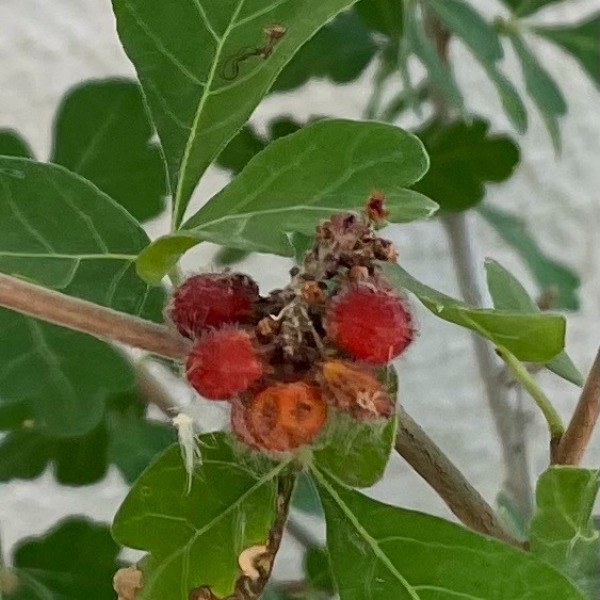Aztec Ruins National Monument, NM
Ethnobotany Series
| ➠ Four-wing Saltbush |
| ➠ Globemallow |
| ➠ Prickly Pear Cactus |
| ➠ Rocky Mountain Bee Plant |
| ➠ Sages |
| • Threeleaf Sumac |
| ➠ Yucca |
| ⇩ Print Hard Copy (PDF 465 KB) |
Threeleaf Sumac (Rhus trilobata)
Threeleaf Sumac (Rhus trilobata) not to be confused with Poison Sumac (Toxicodendron vernix), which is in the same family but different genus, the Threeleaf Sumac (also called Lemonade bush or Skunkbush) has been a very important plant for many indigenous groups in this area for a variety of reasons. Since it grows well in dry, rocky soils, it was traditionally easy to find throughout the western United States. The plant can grow to a height and width of 5-8 ft., has waxy green leaves in groups of 3, and produces fruit of fuzzy red berries called drupes.As a food, the drupes were eaten raw, crushed and mixed with water for a lemonade-type drink, or dried and used as seasoning or made into cakes or mush. The drupes could also be boiled and used as a mouthwash, as a brownish-orange dye, or as a mordant, a way to get paint to set.
The leaves, bark, and roots of the Threeleaf Sumac were used for a number of purposes as well. Tea could be made from the bark or leaves to be used as a medicine or wash after childbirth or as an emetic, and the root could be mixed with pinyon as a perfume or deodorant, as well as a treatment for consumption or tuberculosis.
Finally, the twigs, branches, and wood had a number of uses. The twigs or branches were used for basketry, cradles, or ceremonial purposes. The twigs, along with leaves, could be boiled and mixed with pinyon and ochre soil to create a black dye. The wood has also been used as one of the four sacred kiva fuels.
Have you ever seen Threeleaf Sumac or used it for these or any other purposes?

